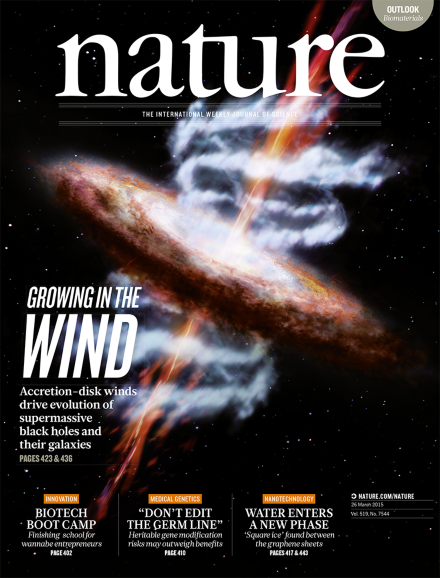Volume 519 Issue 7544, 26 March 2015
Editorial
World View
Research Highlights
Social Selection
Seven Days
News
News Feature
Comment
Correction
Comment
-
Don’t edit the human germ line
Special:
Books & Arts
Correspondence
Correction
News & Views
-
When the wind blows
Collection:

